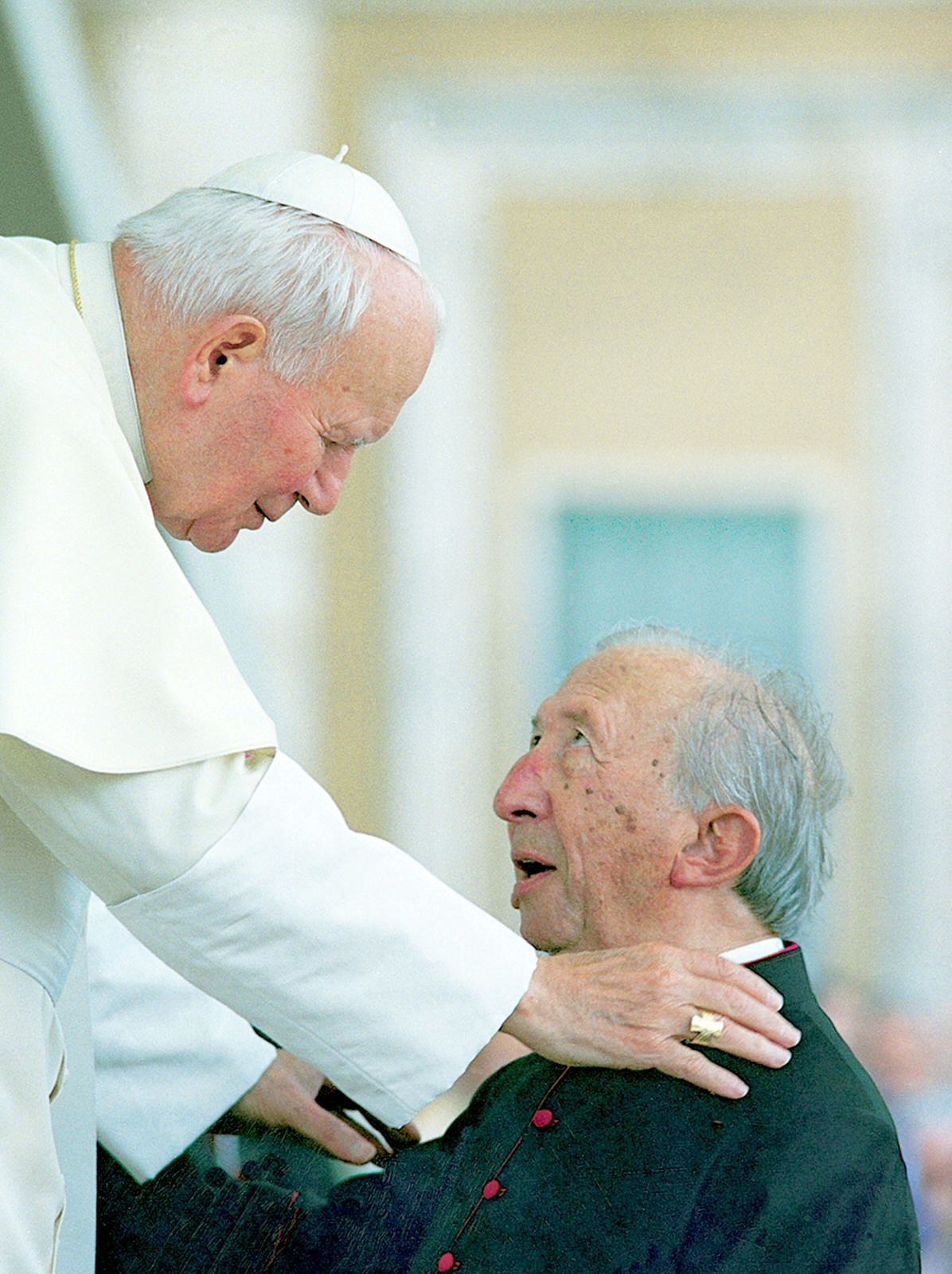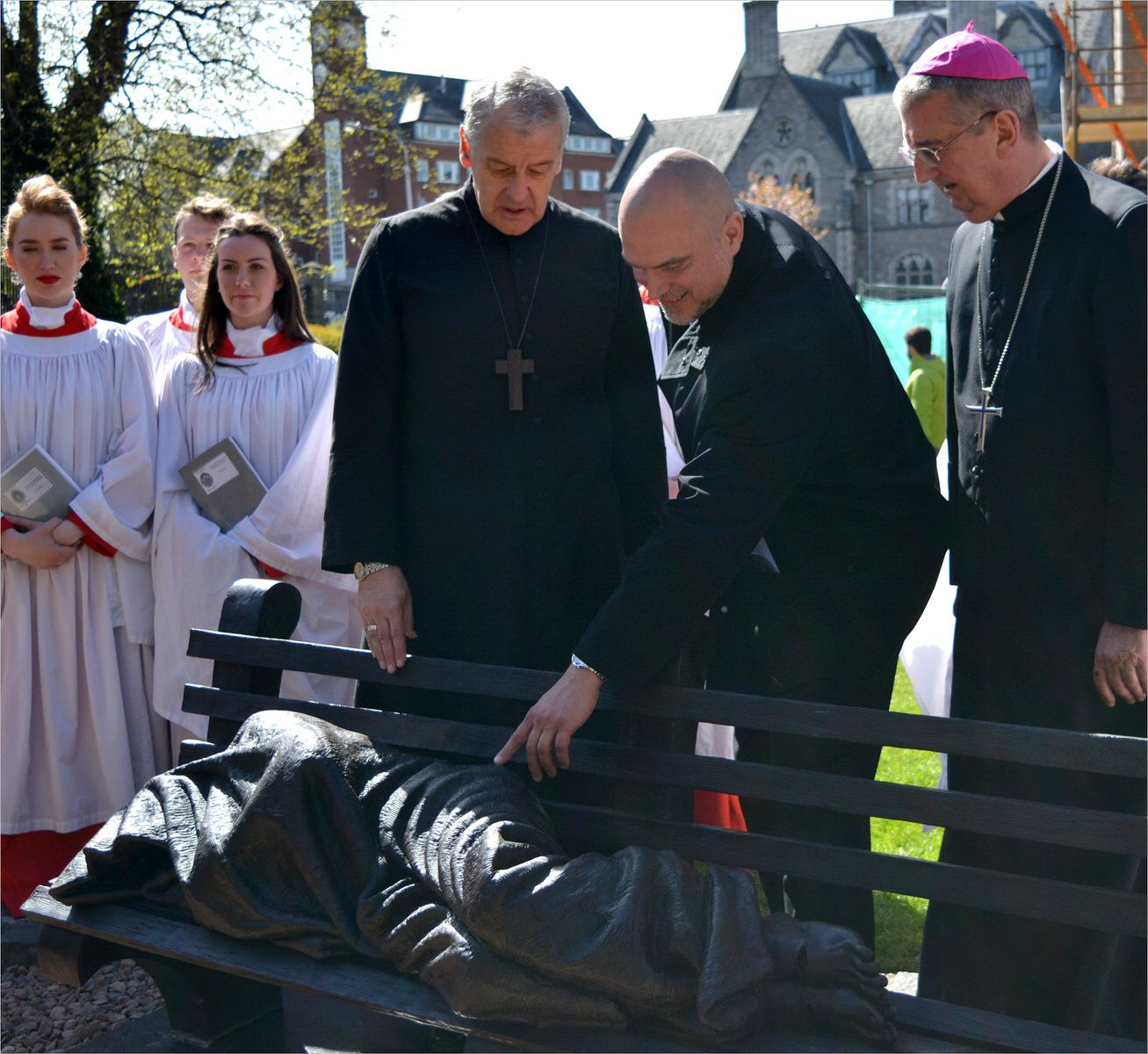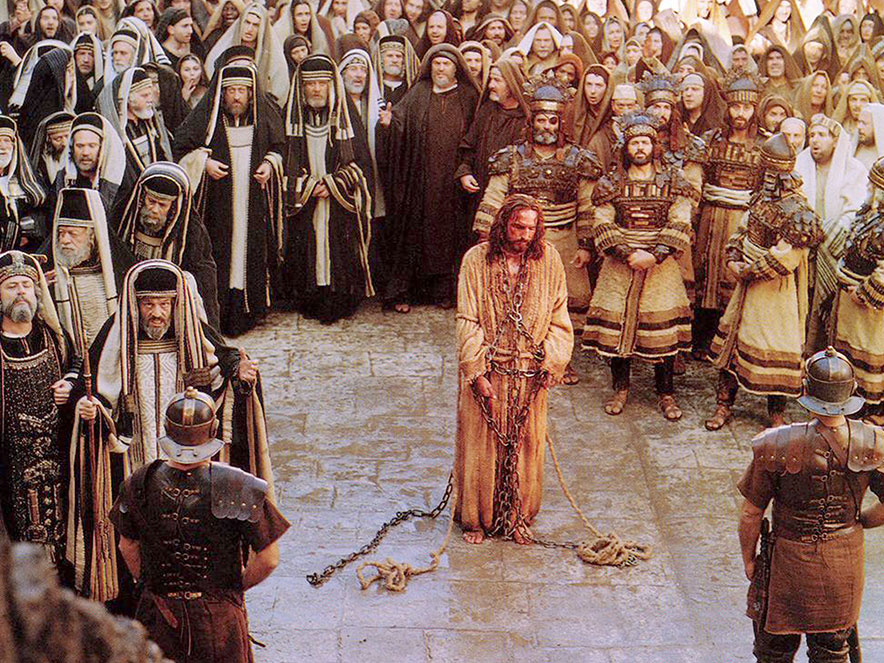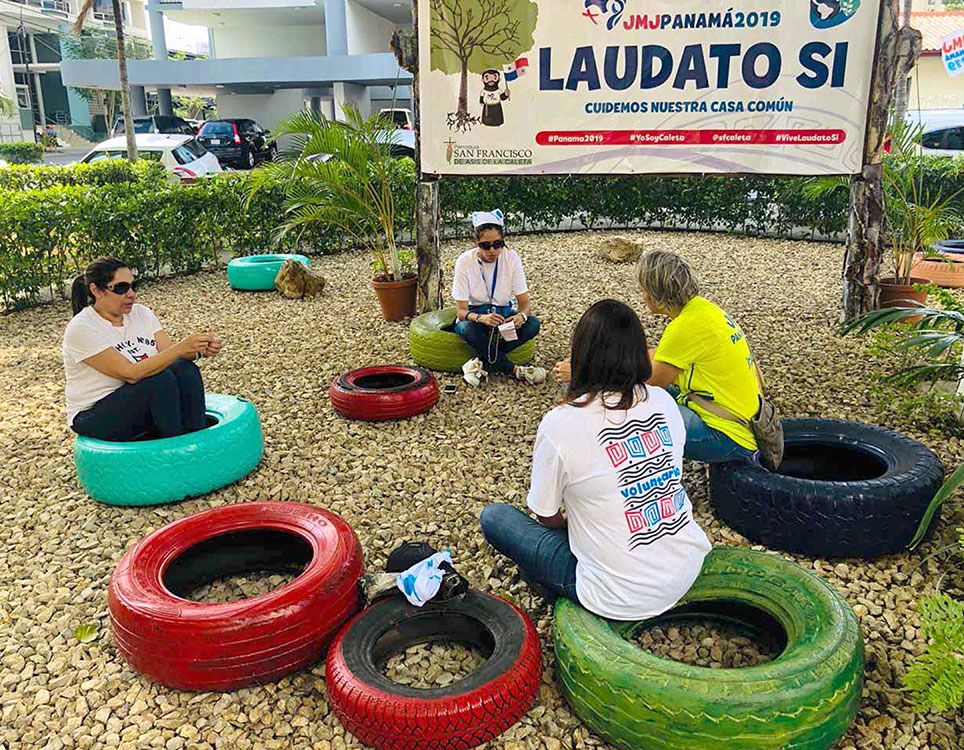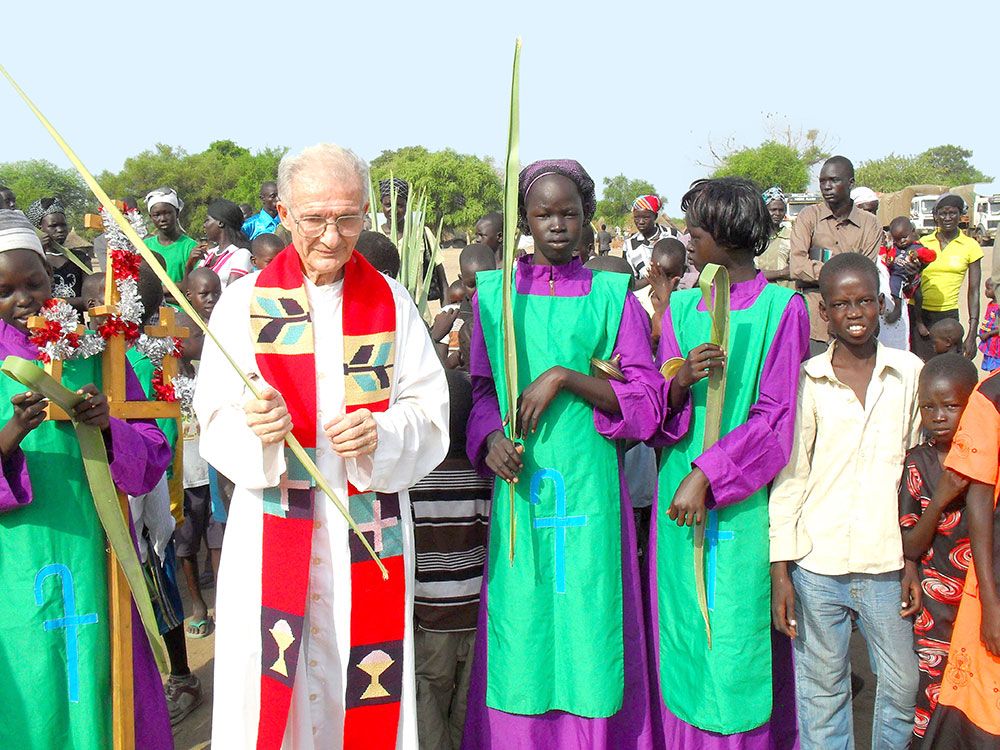As often as you eat this Bread and drink the Cup, you proclaim the Lord’s death until He comes” (1Co 11:26): to define the meaning of the Eucharist, the apostle Paul uses a missionary terminology. By doing so, he challenges us to see in Christian worship much more than just “worship.” In its worship, the Christian community is engaged in the very missionary act of God: it proclaims how “much God loved the world that He gave His Only Son” (Jn 3:16). Through liturgical prayer and rites, this “outward” movement of God is written upon the body itself of the Christian community. God’s mission is at the heart of the Church’s liturgy and defines it outwardly.
Here are some specific features of a mission-driven liturgy.
Picturing the dream of God’s Kingdom
A mission-driven liturgy is that which articulates the dream that God has for the world and conveys the experience of the unconditional, liberating and life-giving love of God so that the celebrating community is transformed by that love, and transported by that dream.
Anthropologically, it is proper for a celebration to make people taste life in its radical goodness and worthwhileness, beyond its fragmentariness; to let them experience the world in a dimension other than the ordinary and tap the life-giving existential forces. On its part, Christian celebration is there to make us envision and already inhabit, in hope and in an anticipatory way, a world that God is making new (Rev 21:1-7) and in whose construction we, too, feel fascinated and involved as active participants. It is in the nature of the liturgy of the Church, as specifically expressed by the gathering at the Eucharistic table, to be a foretaste of the feast to come (cf. SC 8): an experience of the ultimate goal of mission, while still being on the missionary journey.
A liturgy that is devised imaginatively liberates new energies and creative freedom and plays out future alternatives. Its language, rich in symbolism and imagination, makes of the different celebrations a kind of “poetic text,” of a lyrical explosion of faith. A “poetic of the possible” would be offered, capable to drive the celebrating communities to imagine new ways of being in the world: human desire is captured and reoriented, passion kindled, a new “worldview” projected, a shared “narrative” told, and a new “style” of living formed.
All this demands renewed attention to and a re-invention and re-activation of the symbols and rituals that form the texture of our liturgy – if they have to design the new space of God’s kingdom as proclaimed and lived by Jesus and beckon today’s people to enter and participate in.
Icon of Life as “Visited” by God
Liturgical dreaming is not meant to be an evasion from ordinary life but, rather, an in-depth experience of it. Taking part in Christian liturgy is not entering another world but seeing ourselves taking an active part in our day-to-day world.
The concrete life of people and their stories have to be involved in the makeup of the dream. Anticipation of the feast to come and the feriality of today are both constitutive of the Church’s liturgy.
Even if a celebration always implies a ‘break’ from everyday life, that break opens up a window on the wall of our daily life not “as if from outside” but, rather, as a “highlighted within living” (J. G. Davies), in order to unveil the density of the ordinary life.
A liturgy that loses touch with the things of the world and the situation of the time loses contact with the ongoing mission of God in the world, and the liturgical act itself is affected negatively. Essential to the liturgical act is, in fact, the interplay between the Christ event and the life events. The Paschal mystery of Christ is the core of this Christian celebration but it cannot be limited to the death and resurrection of Jesus. It needs to be taken beyond that. Its dynamism operates, in the power of the Spirit, throughout new historical events. Liturgy is the symbolic expression of this paschal dynamism that leads history onward towards its fulfillment in God. In the liturgical celebrations of the Church, the reality of the world and the many human experiences are to be mirrored and relived, beyond their ordinariness, as being in a process of being healed, reconciled and graced.
The interdependence of worship and common life of the people and the ongoing correlation between the two constitute also a criterion for liturgical revision or reform. Reference to past liturgical tradition, notwithstanding its importance, is not sufficient to devise a liturgy. The continuity of tradition is found in the ongoing intersection of the event of Christ with real people’s lives. A liturgical revision is an ongoing process aiming at giving a ‘body’ to the “Good News,” in a way that it is communicated here and now, in the given concrete situation.
Conviviality of differences
Missional liturgy attends to context, specifically, to the “cultural” context. Christian liturgy is a main locus in which the engagement of the Church’s mission with a people’s culture takes place: a process of “inculturation” through which the Gospel interacts with the given culture so as to transform it from within and, at the same time, to be creatively re-expressed in the symbolic forms of the culture. Given, then, that in missionary communication the Gospel reaches different peoples as already embodied in a cultural form, the process of inculturation is also an “intercultural” process which involves an encounter between the Gospel and two or more cultures together.
The ultimate meaning of the process is that each people, in the totality and integrity of its life, is the subject of the divine-human exchange of salvation that takes place in Christian worship. In this way, through the Church’s liturgy, new evidence and space is given to the presence and action of God’s Spirit in the life of a people, both as a critical challenge and liberating power, in relation to whatever is oppressive, unjust and exclusivist in the way of living of that people, and as endowing it with unique riches as gifts for all in the world.
The attention to context makes of Christian liturgy the celebration of God’s munificence and of the conviviality of differences through a plurality of liturgical forms throughout the world and, in today’s global multicultural context, also in the same place. As society is now multicultural in all sorts of dimensions, a wide variety of worship cultures is also needed: As it has been said, “it is important for a community to see that worship is sparking within their contemporary world, in the midst of the life and culture they know.”
Open-Table fellowship – Feast of Hospitality
Through His table fellowship with the poor and the sinners, Jesus inaugurated the great banquet feast of God’s Kingdom for the community of His disciples to do the same in their mission and worship. The liturgy of an open-door Church is another fundamental feature of a mission-driven liturgy, as a proclamation of God’s great hospitality and celebration of His embrace of compassion for all.
In the fragmentation of today’s life and in the face of exclusion processes that create masses of refugees worldwide, when our societies are crossed by a multiplicity of borders and the experience of God suffers the drama of either His eclipse or His violent return in the form of religious fundamentalism, it is of decisive importance that both Christian mission and worship manifest the face of a “welcoming” God and tell His dream of a world of one family, all sons and daughters of God.
Hospitality is not a superficial commodity: it has a central place within God’s story, as displayed most fully in Jesus Christ. God’s paradox is that, in the Incarnation, God becomes our guest in order to lavish on us His own hospitality. And, indeed, it is by being Himself a guest that Jesus becomes the One who gives, and gives in abundance, making people experience the hospitality of God.
Worship is the believer’s participation in this divine hospitality that cannot be separated from our economic, political, or public and, indeed, religious lives. Christian worship is, above all, the proclamation and experience of the Father’s embrace and joy: “Let us eat and make merry, for this my son was dead, and is alive again; he was lost, and is found” (Lk 15:24, 32).
Always from the perspective of missionary-liturgical hospitality, today, when a shift is underway from the religious icon of the “church-goer” to that of the “pilgrim” whose religiosity is characterized by a search for meaning in life, there is the need to provide liturgical spaces and moments for this new type of ‘religious’ people as a form of shared pilgrimage towards an encounter with the living God.
Feasting with God in the Abyss
At the heart of the Christian liturgy, there is the memory of Jesus, the Innocent, crucified but resurrected by God; a memory that lays bare not only the logic of this world, but also reaffirms the scandal of the unique relationship between God and the victims, the scandal of how God reveals Himself and encounters us in the form of the victim, as a Victim among victims. In this regard, more than ever, a mission-driven liturgy is called to speak the language of a “borderless border hospitality,” and thus challenge the celebrating community to ask who and where they are when they get together for the Lord’s Supper, and how that liturgical act around the Lord’s Table can transform the fate of the victims, the life of the marginalized and the societies that produce them.
Christian liturgy that proclaims the Lord’s death until He comes again cannot turn to God and talk of God if not from within the destructive experience of the victims themselves, “in conversion to passion,” as Johann-Baptist Metz says. A missional liturgy depicts God’s Kingdom through the memoria passionis, by retelling the story of the suffering of Christ Crucified and of the crucified people, a suffering that God transforms into the pain of the world’s rebirth beyond oppression and injustice. No dream of the ‘City of God’ is possible without first descending deep into the human dramas and historical disasters – “on the verge of nothingness” – to open them to a possibility of liberation and justice.
Christian liturgy is, then, a feasting with God in the abyss, where God in Christ has descended, in order to make His own the experience of forsakenness suffered by the victims of history. There, the liturgical proclamation of God, the Abba, needs to integrate the cry of those who are at the receiving end of violence. Even more, a liturgy is needed that is made not only for but also by the oppressed themselves in the midst of their suffering: a liturgy that arises from the experience of Christ, crucified and raised, that the victimized live in their daily lives. The big challenge of such liturgy is to relate to each other the festive character of the liturgy and the violence-shaped memory of the victims.
From “rite” to “life”
The most fitting place for a liturgy, as feasting with God in the abyss, seems to be those social and topographic “margins” where the victims live. In fact, the “Paschal mystery of Christ” speaks not of a ritual performed in sacred precincts but of the violent death that Jesus suffered “outside the gate” of the sacred city, excluded from the fellowship of people and God; an exclusion which He endured as a free act of radical solidarity with, and for, all the victims of human history.
At the very core of the liturgy of the Church is the thrust beyond the ritual form into life itself. The liturgical memory of Jesus’ passion, accompanied by the invocation of the Spirit, represents then a true missionary initiation into a dispossessive compassion that makes the participants in the liturgical celebration share even the destructive and enforced dispossession suffered by their fellow men and women: “Jesus suffered outside the gate … let us, then, go forth to Him outside the camp, bearing abuse for Him” (Heb 13:12-13).
A liturgical celebration is really fulfilled when the gathered ecclesial community goes forth to the place of the outcasts and from there restarts its missionary journey. Its liturgy becomes one with the liturgy of the world that it symbolizes, namely, with that primal, though often informal, liturgy that God, through Christ and in the Spirit, celebrates for the world as a whole.
Together with the Orthodox theologian Ion Bria, we could speak, in this regard, of “liturgy after liturgy”: the liturgical celebration extends into the life of the faithful in the world. The Eucharistic liturgy unfolds into the celebration of the “sacrament of the other” in the public marketplace, etc, and the whole life of the Church becomes a “doxology,” a celebration of Christ’s Easter triumph and of liberation from all oppressive and degrading forces.









